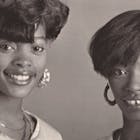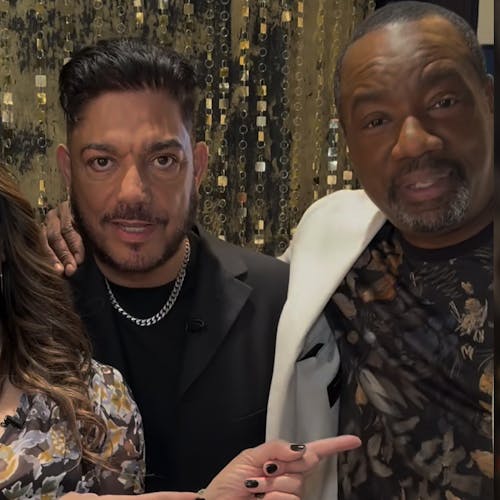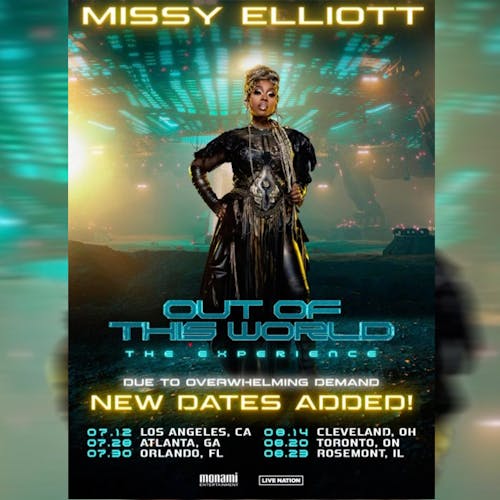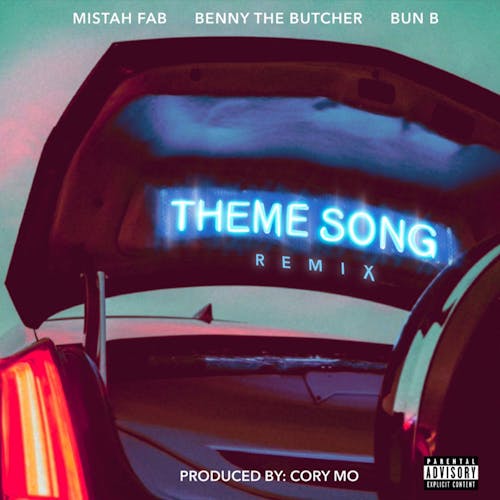
Life In A Hip-Hop Girl Group
Life In A Hip-Hop Girl Group
Published Mon, October 18, 2021 at 5:30 PM EDT
Popular music has so many iconic girl groups. You’ve got the 60s pop and Motown acts like The Supremes and the Ronettes. Then, the 70s soul and disco legends like LaBelle and The Emotions and the 90s R&B acts like TLC and En Vogue (known for hits like “Hold On” and “Free Your Mind”). And, of course, the chart-toppers of the 2000s, like Destiny's Child with Beyoncé Knowles (who pumped out classics such as “Bills, Bills, Bills,” “Say My Name,” and “No, No, No, Pt. 1”). Hip-Hop and R&B girl groups have been a part of the culture from the beginning and a significant part of the rap game for over 40 years. Being in a Hip-Hop girl group comes with highs and lows — the Billboard Hot 100 hits, Grammy awards, and viral music videos aren’t the whole story.
Still, groups like Salt-N-Pepa, Xscape (known for hits like “Just Kickin It”), J.J. Fad, Crime Mob, SWV (of “Right Here” fame), and more have lived the life, and can tell the tale.
The Sequence was Hip-Hop's first female group, made up of three friends out of South Carolina. The trio landed on Sugar Hill Records in 1979, unique in being all-female and not being based in New York or New Jersey. But Cheryl “the Pearl” Cook, Gwendolyn “Blondy” Chisolm, and Angie "Angie B/Angie Stone" Brown were ready to become the first ladies of Hip-Hop's first powerhouse label.
But the Sequence has always had to fight for recognition. The group members became embroiled in a high-profile lawsuit with Bruno Mars over the singer-songwriter's hit "Uptown Funk," which "borrowed" elements from "Funk You Up." And at the 2017 Hip-Hop Honors show, which celebrated women in Hip-Hop, they weren't recognized with anything but a photo. When the group was asked to participate in an all-star singalong of Queen Latifah's "U.N.I.T.Y." at the end of the show, The Sequence declined.
“We looked at them like they were crazy,” Cook told Rolling Stone in 2014. “We’re not going on the stage to talk about unity when there’s no unity amongst us. And we left.”
DROP YOUR EMAIL
TO STAY IN THE KNOW
Sugar Hill Records owned the group’s publishing for 30 years, but the rights to “Funk You Up” reverted back to the Sequence in November 2016.
By the time Salt-N-Pepa emerged on the scene circa 1986-87, the landscape had changed slightly for women in Hip-Hop. Roxanne Shante had broken big in 1984 with "Roxanne's Revenge," and The Real Roxanne followed in her wake, though with less credibility. But S-N-P hit with catchy, radio-friendly production, with the success of 1988's hit single, "Push It," and the dawn of shows like Yo! MTV Raps, Salt, Pep, and DJ Spinderella became international stars. They released the first album by female rappers (1987's Hot, Cool & Vicious). Success came fast for the group and their hitmaking producer Hurby "Luv Bug" Azor. Pepa was still focused on her higher education until show money became too big to ignore.
“I was still in school,” Pepa told RTB in 2020. “Our first club was the Inferno, [then] we stepped up to [Disco Fever]. And I see my name inside the club. You’d see ‘Salt-N-Pepa Oct. 20th’ and I’d think ‘Omigod!’ Cheryl had to tell me, ‘Pep, you can quit school.’ I’m Jamaican. We don’t quit! When I saw it at the Fever, that’s when I saw that part of my life.”
And girl groups began to proliferate throughout Hip-Hop. Finesse & Synquis were out of Staten Island and debuted in 1988 with Soul Sisters on MCA Records. And Silk Tymes Leather dropped in 1990 out of Atlanta, produced by a teenaged Jermaine Dupri, with their debut album, It Ain't Where Ya From...It's Where Ya At.
On the West Coast, girl groups were also beginning to make big commercial noise. In the wake of Salt-N-Pepa's breakthrough with "Push It," around-the-way-girl groups were suddenly a hot commodity. MC Hammer was becoming one of the biggest acts in the rap industry, and the Oakland product recruited local dancers for his high-energy live shows. One such dancer was Suhayla "Sweet L.D." Sabir and Lil P(Phyllis Charles) and Terrible T(Tabatha Zee King-Brooks) would form Hammer's backing dancers and soon-to-be rap group, Oaktown's 357.
"I didn't have any training and I got most of my experience in the club, Silk's in Emeryville," Sweet L.D. shared in 2015. "That's where I met Hammer."
"He met me at an army base club in Oakland," Lil P told Underground Girls Of Hip-Hop. "He heard me playing around on the mic one night doing the Salt-N-Pepa song 'Tramp.'"
With Tabatha joining them after P and L.D. were established within Hammer's entourage, the two girls had to adjust to "Terrible T," who was the newcomer.
"We clicked easily when we met....we got along like sisters," L.D. said. "When Tab came in, there was a little bit of getting used to, chemistry-wise. We had a new girl."
But Oaktown's 357 broke through in 1989 with their debut album Wild & Loose. Singles like "Yeah, Yeah, Yeah" got the group attention, but Hammer's grueling schedule proved to be too much for Lil P, who subsequently quit Oaktown's 357. By the time of the group's biggest single, the B Angie B-assisted "Juicy Gotcha Krazy," Oaktown's 357 was a duo.
"We were not getting paid for rehearsals, we were not getting paid for local...Bay Area shows," L.D. explained to Dusty Vision TV last year. "So when we get on The Arsenio Hall Show, we didn't understand that...when you're a hired artist, you're paid for your time being on that show. Hammer said 'we've got The Arsenio Hall Show scheduled, these are the songs we're doing.' We [were just like] 'OK.'"
Eazy E's Ruthless Records also found their own high-profile girl group. J.J. Fad was the first significant act on Eazy's famed gangsta rap record label; the trio set the stage for N.W.A.'s success with their debut album, Straight Outta Compton. The trojan horse was J.J. Fad's uber-catchy single "Supersonic." Produced by Arabian Prince, the song gave Ruthless the kind of commercial clout that netted major distribution across the country. It paved the way for N.W.A. to bum-rush America.
“For [Eazy-E] to have thought that far ahead, to put out a group that would put his label on the map in order for his group to come out, it was genius to me,” Sassy C told RTB. “I don’t see why it would have made them look soft because it was smart.”

“We looked at them like they were crazy. We’re not going on the stage to talk about unity when there’s no unity amongst us. And we left.”
- Cheryl "The Pearl" Cook on The Sequence getting dissed at Vh1's Hip-Hop Honors in 2017
With such significance to Ruthless, it's understandable that J.J. Fad's omission from N.W.A.'s 2015 biopic Straight Outta Compton was a sore spot. The movie told the story of, not only the iconic group, but Ruthless Records. Yet, J.J. Fad wasn't mentioned.
“The way they tried to justify it is they said it wasn’t a ‘factual’ movie," Sassy C told RTB. "It wasn’t true to the timeline type of thing. It was a rendition and more for entertainment rather than factual.” Baby D admits it stung a bit, saying, “Without no us, there’d be no them. They can put it how they want to. My feelings was a little hurt but I mean, I kept it moving. It’s no hard feelings. It was just like, ‘Oh really?’ I didn’t go cry or nothing.”
As Sassy C explains it, they were told Eazy-E’s widow, Tomika Wright, was ultimately in control of the narrative. There was a rumor going around that anyone who pushed back against her would be ostracized from the film.
“It was a bunch of controversy,” Sassy C adds. “They pretty much put it on her,” to which J.B. says, “And I totally believe that. I think that’s one of the reasons why Dre came out with [HBO’s] The Defiant Ones and included us in that. I don’t think they had a whole lot of say on what went on in that movie. I also think the way they wanted to appear in that movie, if we would have been a part of it, it would have softened their image. I don’t think they wanted it out there like that.”
But it was Salt-N-Pepa whose success really set the standard for rap girl groups. As their careers progressed, Salt and Pep both wanted more creative control. Azor guided his artists with a stranglehold on control, until Salt rebelled by producing and writing more on her own for Salt-N-Pepa's acclaimed 1990 album Blacks Magic. The trend continued through to the follow-up, 1993s multiplatinum Very Necessary. It was Pepa who wrote the album's monstrous lead single "Shoop." On the track, Pepa and Salt wanted to talk a little shit about the kind of men they like, and the song has lingered as a fun anthem for feminine sexuality.
"Women being like 'yeah this is what I need, this is what I want," Pepa said of her inspiration for "Shoop." "It was the first single and it was platinum. It's a beautiful feeling, to this day, to have my song in Deadpool. And on Ellen. That's like one of her favorite rap songs!"
The 1990s saw other girl groups emerge over the course of the decade; the Bay Area's Conscious Daughters kept things straight, landing on Paris's Scarface label for their debut, Ear To The Street. Ghetto Twiinz, out of New Orleans, starred on Rap-A-Lot throughout the late 1990s and early 2000s. Sisters Tonya and Tremethia Jupiter maintained hardcore Dirty South appeal with albums like 1998's No Pain No Gain. G-Funk mainstay Warren G signed the quintet Da FIve Footaz in the mid-1990s, but the group (Jah Skillz, NebLuv, Knehi, Cobra (a/k/a Red), Ka-Bar, and I-AME) saw their projects shelved. They would later self-release much of their work.
As the 1990s gave way to the 2000s, groups in general seemed to fade from the mainstream rap landscape. But during the crunk era, there came a group with two badass frontwomen. Crime Mob were the youthful spirit of the crunk era and at the group's epicenter was Diamond (Brittany Carpentero) and Princess (Venetia Lewis). Their single "Knuck If You Buck" became an early 2000s club anthem, and Princess reflected on when they recognized the song could change everything and how it reshaped the group.
"The first time was July 2002," Princess recalled to REVOLT. "We had to go to a show at the skating rink that day and Lil J came up with the beat. That was the first time we recorded it. The first couple of versions had 10 or 12 people on it. Everyone in Ellenwood thought they were part of Crime Mob (laughs). Part of how that became what was eventually released was process of elimination. We had other songs and the boys were also in another group. Once that group disbanded, they stopped performing their songs. Then, Money Black — who used to be Cyco Black — Killa C, and Lil J were the first few main members of Crime Mob. Then, Diamond and I joined. The version with the girls became the most popular one. So, we started performing that one. When it came down to actually putting on paper who was in the group, it was whoever was on that version of the song."
Crime Mob would go on to other crunk era anthems, including the standout "Stilettos" a song that cemented Diamond and Princess as the go-to girls of the era and gave the ladies in the clubs a crunk anthem all their own. Other high-profile Y2K groups, such as Blaque, helped keep the tradition going through the early 2000s.
Today, the City Girls are the most high-profile girl group in our Hip-Hop playlists, carrying a flag for a lineage of women who have staked their claim on the microphone. J.T. and Yung Miami speak to and for a generation raised with self-awareness, Instagram, and unfettered ambition. But when asked to describe City Girls' origins, J.T. was straightforward.
"Me and Caresha just having fun," J.T. explained to i-D earlier this year. "We had like a month to make that mixtape because we were in hot water for not working at all. We got signed, we got excited, and we weren’t working, so P [Quality Control co-founder Pierre “P” Thomas] put us on a time limit. And it’s one of our best bodies of work to me. There was no precedent, though. It wasn’t about charts. It was just: You can do whatever you wanna do, say whatever you wanna say, nothing to lose. We just put it out, hoping the world sees it, and they did, and now we are the City Girls."
Newcomers The Savagez describe their sound as “Southern trap with a West Coast bounce.” both hailing from the dirty south (Jet Dope from Dallas and Kell from Spartanburg, South Carolina), the duo channel their bad bitch energy over hard-hitting 808s and G-funk worthy synths. “We definitely like chopped beats. In Texas, being at the strip club is the culture just like Atlanta,” Jet Dope explained. “The first club I went to, I don’t even think I went to a regular club. I went to the strip club when I was 18. So, being in that lifestyle and listening to that type of music, that definitely influenced our music coming out here to the West Coast.”
The Savagez are the latest in a long tradition. From the Sequence to Salt-N-Pepa to the City Girls, the girl group is a cornerstone of Hip-Hop. There are pioneers still fighting to get their due, there are chart-toppers who have helped define popular music, and there are icons who set the standard. They all have unique stories that are part of a sisterhood and a specific kind of legacy. Women in Hip-Hop are integral to the culture, and groups represent some of the highest collaborative genius the genre has ever seen. Combining those two elements gives you a rich history of remarkable music, image-making style, and flat-out dope shit.
All hail the queens.






